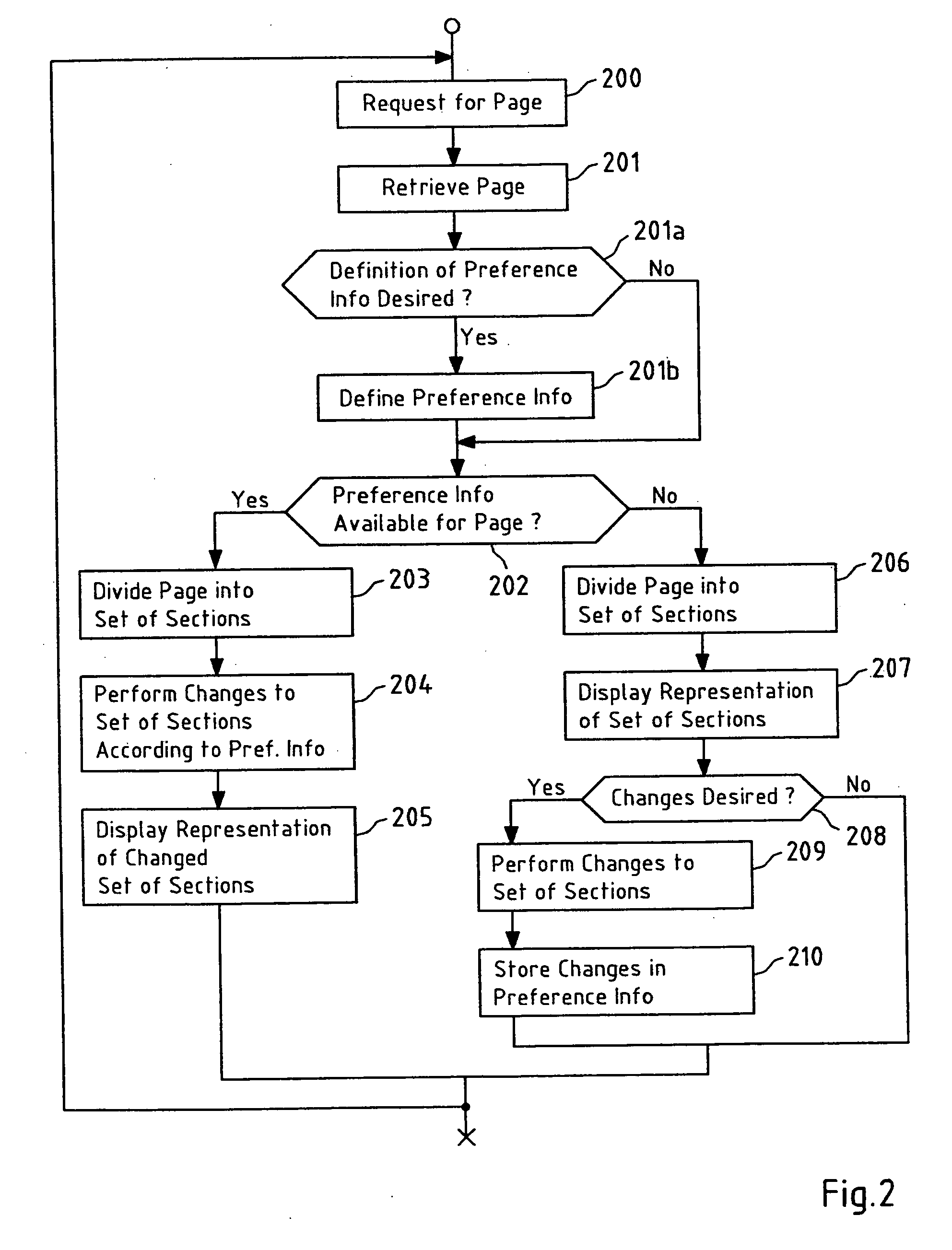User-defined changing of page representations
a page object and user-defined technology, applied in the field of user-defined changing of page objects, can solve the problems of large page structure, large display size, and difficulty in figuring out the structure of large pages, so as to increase the zoom factor of the corresponding section, improve readability, and reduce the amount of information
- Summary
- Abstract
- Description
- Claims
- Application Information
AI Technical Summary
Benefits of technology
Problems solved by technology
Method used
Image
Examples
Embodiment Construction
[0089] The present invention proposes to generate a changed representation of a page object, which is either a page or a part of said page. Said changed representation of said page object may for instance be characterised by rearrangements and / or amendments of contents of said page object according to preference information. Said preference information may for instance have been defined by a user before, or may represent a search criterion according to which said rearrangements and / or amendments are performed. Said changed representation of said page object then may for instance be displayed on a display, stored or further processed. Said changed representation of said page object is generated by retrieving said page object in response to a request for said page, by dividing said page object into a set of sections, and by performing changes to said set of sections according to preference information to obtain a changed set of sections representing said changed representation of said...
PUM
 Login to View More
Login to View More Abstract
Description
Claims
Application Information
 Login to View More
Login to View More - R&D
- Intellectual Property
- Life Sciences
- Materials
- Tech Scout
- Unparalleled Data Quality
- Higher Quality Content
- 60% Fewer Hallucinations
Browse by: Latest US Patents, China's latest patents, Technical Efficacy Thesaurus, Application Domain, Technology Topic, Popular Technical Reports.
© 2025 PatSnap. All rights reserved.Legal|Privacy policy|Modern Slavery Act Transparency Statement|Sitemap|About US| Contact US: help@patsnap.com



